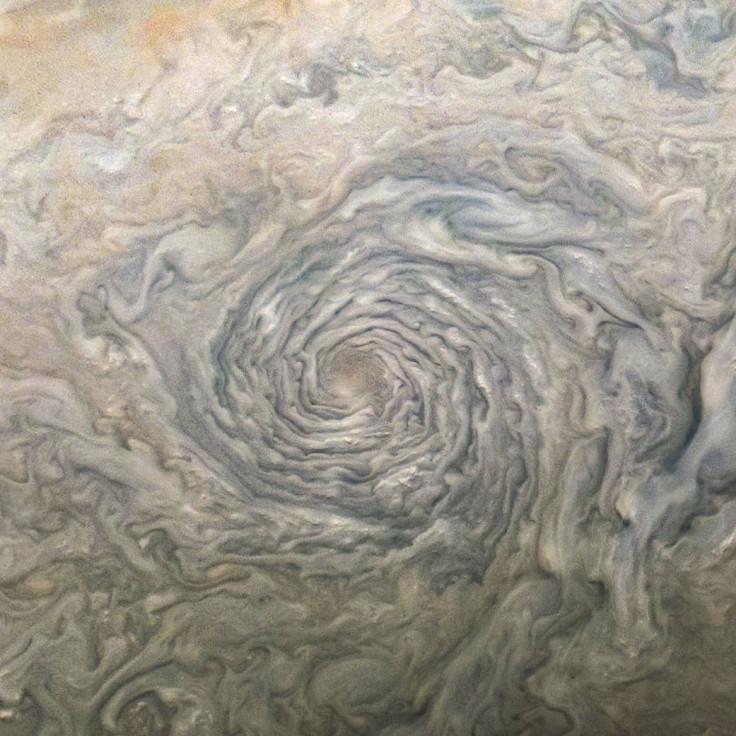NASA Juno Snaps Stunning Jovian Vortex Cyclone In Jupiter [PHOTO]

The Juno spacecraft launched by NASA had just completed its latest flyby on Jupiter. As it flew over the planet, it was able to capture a stunning photo of a cream-like vortex swirling within the planet’s atmosphere.
According to NASA, Juno’s latest flyby marked its 23rd visit to Jupiter, which the agency also referred to as perijove 23. As it hovered over the planet at an altitude of over 5,000 miles, the spacecraft was able to spot a storm brewing on Jupiter.
Due to the combination of colors swirling in Jupiter’s atmosphere, the vortex created by the storm looked like cream being mixed into a cup of coffee. Although the planet is mainly composed of helium and hydrogen, NASA noted that the colors of its clouds were affected by the rising gases that contain sulfur and phosphorus.
“Jupiter is composed mostly of hydrogen and helium, but some of the color in its clouds may come from plumes of sulfur and phosphorus-containing gases rising from the planet's warmer interior,” NASA explained in a statement.
According to the agency, the vortex was spotted within Jupiter’s northernmost belt, a region where the planet’s most active cloud bands reside.
“Juno observed this vortex in a region of Jupiter called the ‘north north north north temperate belt,’ or NNNNTB, one of the gas giant planet’s many persistent cloud bands,” NASA stated. “These bands are formed by the prevailing winds at different latitudes. The vortex seen here is roughly 1,200 miles (2,000 kilometers) wide.”
Although the image of the Jovian vortex was taken by Juno’s camera, it was enhanced by a citizen scientist using the data obtained by NASA’s spacecraft. According to the agency, the data and images collected by Juno are available for public use through the mission’s website.
“Citizen scientist Kevin M. Gill created this image using data from the spacecraft's JunoCam imager,” NASA stated. “It was taken on Nov. 3, 2019, at 2:08 p.m. PST (5:08 p.m. EST). At the time, the spacecraft was about 5,300 miles (8,500 kilometers) from Jupiter’s cloud tops above a latitude of about 49 degrees.”
© Copyright IBTimes 2024. All rights reserved.





















